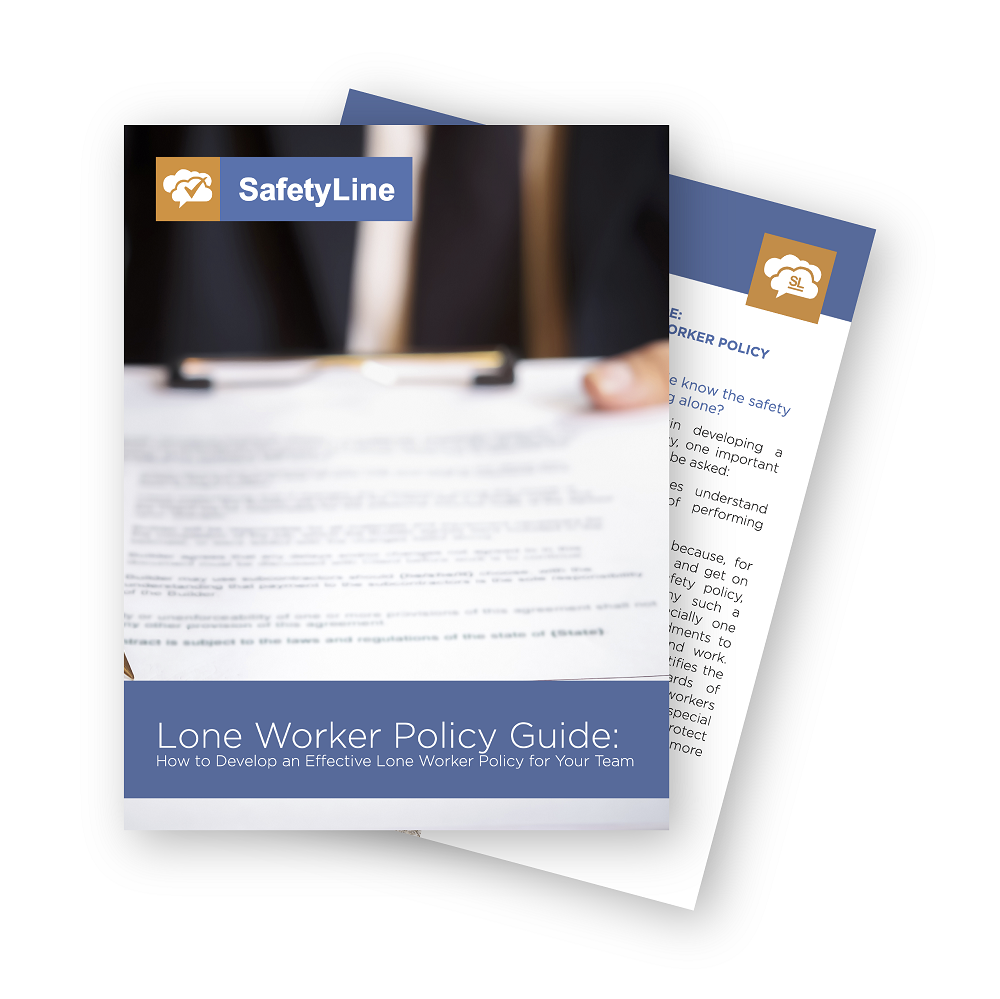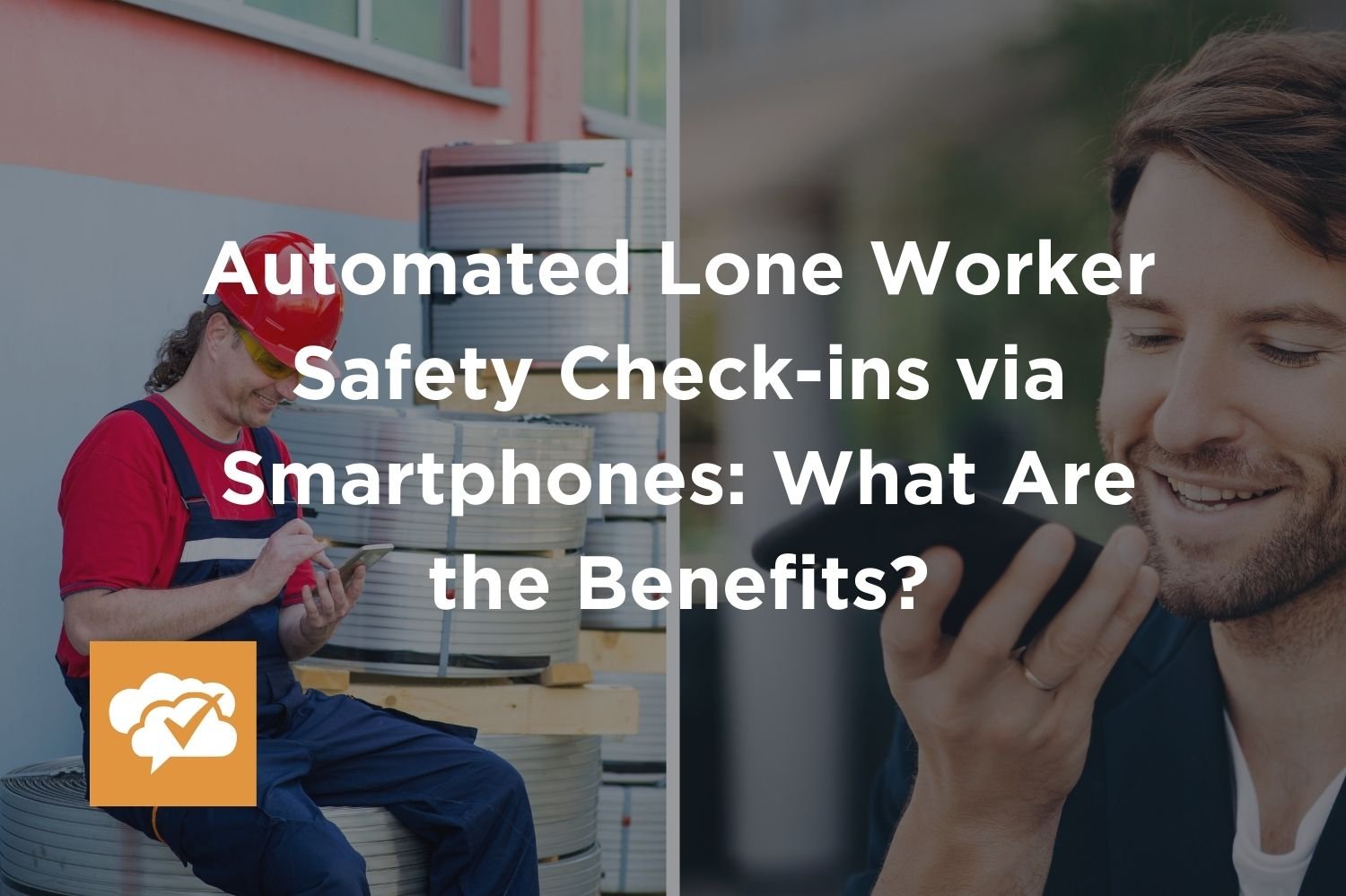Featured Resources
Lone Worker Policy Guide and Template
A lone worker policy is an effective way to ensure that your lone workers are well-educated on your company’s work-alone rules and have extensive knowledge of all workplace hazards that could be encountered on the job.
Hazard Assessment Guide
In the process of doing a hazard assessment for your workplace, it is almost a certainty you’ll learn information about the operational aspects of your organization you were unaware of before the assessment.
View eBook
Develop a Free Lone Worker Program for Small Teams
Developing a free lone worker check-in system is a simple process for small teams that any organization can implement.
View eBook
SafetyLine Blog Categories
General Safety | Lone Worker Safety | SafetyLine News and Updates | SafetyLine Product Updates | Compliance, Policy, and Regulations | Downloadable Resources |
The Role of Technology in Ensuring Lone Worker Safety
When you hear the term “lone worker” who do you picture in your head? Because they exist across all industries, lone workers have many different faces and work environments. No matter what industry, you are considered a lone worker when you perform your job in conditions where there are no people nearby and/or help is not easily accessible in an emergency.
The Benefits of Attending Safety Conferences: 2023 Safety Conferences and Expos
Safety conferences are unique opportunities to connect with other industry professionals, learn about the latest occupational health and safety (OHS) technologies, as well as stay up-to-date with safety legislation and regulations.
SafetyLine’s Year in Review: Top Blogs of 2022
In 2022, SafetyLine published 35 original blogs and content that ranged from cardiac arrest and call centers to creating emergency action plans and conducting lone worker needs analysis – we covered a lot. Out of all the content, six blog articles resonated most with readers in 2022.
November 2022 Recap: In Other News and What You May Have Missed
Here is all of the occupational safety and health-related news that you might have missed in November 2022, including the OSHA’s top 2022 workplace safety violations, a new OSHA workplace stress website, as well as new information on PPE for women and nonfatal workplace injuries.
How To Prevent Workplace Injuries with Personal Safety Alarms
When it comes to improving the overall occupational health and safety within your workplace, personal safety alarms can be a very effective and valuable safety measure with, as you will read further, several significant benefits to your organization.
Risk Mitigation Strategies: How to Plan for the Worst
Every safety manager and employer would love to have a way to predict workplace accidents before they hurt an employee. Unfortunately, that does not exist yet, however, the good news is there are risk mitigation strategies that can be implemented now, preventing many of these accidents from taking place and as a result, protecting your workers from injuries and harm.
October 2022 Recap: In Other News and What You May Have Missed
Here is all of the occupational safety and health-related news that you might have missed in October 2022 including a number of funding announcements for workplace mental health, OHS education and training, workplace violence, as well as a survey on the four-day work week.
A New Era of Personal Safety Devices on the Market
In a nutshell, these devices will protect an individual worker (or workers - in coordination with other devices) from certain safety hazards in the workplace and other environments and situations. Personal safety devices help employers protect their employees when mobile, employing various technologies to address a range of safety challenges in the workplace at the time. Personal safety devices include a broad group of technology that can include:
September 2022 Recap: In Other News and What You May Have Missed
September 2022 safety news included new OSHA grants for safety training, NIOSH looks at suicide prevention as well as electrical safety and confined spaces.
Creating an Emergency Action Plan for at-Risk Employees
When a workplace experiences an emergency and their employees are in danger, how quickly and efficiently the employer responds can create a significant impact on the safety outcome, if they can go home at the end of the day. To ensure that you can act swiftly and strategically in a workplace crisis, employers must develop an emergency action plan customized to their specific operational and safety requirements.
Social Worker Safety: Keeping Safe While Working Alone
While society prizes those among us who put others first, it takes more than just empathy to be a successful social worker. Social workers combine active listening, knowledge of the rules, and positivity to succeed. But unlike other public service professions, along with health workers, paramedics, and firefighters, social workers can find themselves in harm’s way. They can, however, reduce their risk if they are prepared.
August 2022 Recap: In Other News and What You May Have Missed
Here is all of the occupational safety and health-related news that you might have missed in August 2022.
How to Prepare for Working in Hot Environments
Working in the heat can cause a range of health conditions, putting your people at risk, especially during the summer months. Requiring workers to perform their jobs in hot conditions also requires the employer to do everything possible to protect employees, helping them work in high temperatures safely.
Automated Lone Worker Safety Check-ins via Smartphones: What Are the Benefits?
As we continue to live in an increasingly technological world, it can be tricky navigating the mass of information and the number of options for worker safety, such as phone-based apps, safety tags, wearables, etc. As you read further, you will learn about three common types of lone worker safety tools, hopefully making it easier for you to determine which system is best for your team and occupations' health and safety needs.
July 2022 Recap: In Other News and What You May Have Missed
Here is all of the occupational safety and health-related news that you might have missed in July 2022.
4 Summer Safety Tips For Lone Workers
During summer, it’s especially important to pay close attention to your health, wellbeing, and safety as a lone worker. In this article we will look into the ways you can prioritize your health during the summertime heat and how to keep you safe and sound all season long.
Why Worker Safety Check-ins are Essential
Safety check-ins are integral to an effective occupational health and safety (OHS) program, helping improve the overall well-being of your employees, especially lone workers who perform their jobs in isolation and by themselves.
June 2022 Recap: In Other News and What You May Have Missed
Here is all of the occupational safety and health-related news that you missed in June 2022, which was National Safety Month in the United States. Stay cool and shaded out there!
Conducting a Lone Worker Needs Analysis
To find and document important safety details and information, you need to conduct a lone worker needs analysis, which will highlight and improve four primary areas including safety procedures, areas for improvement, opportunities that should be explored further, and holes in your lone worker safety program.
May 2022 Recap: In Other News and What You May Have Missed
Here is all of the occupational safety and health-related news that you may have missed in May. Hope you’re having a safe spring!























